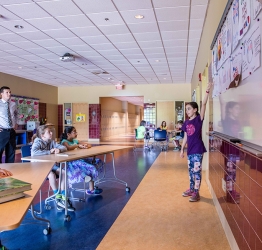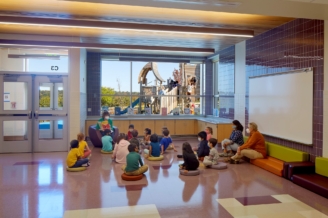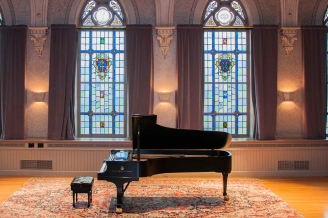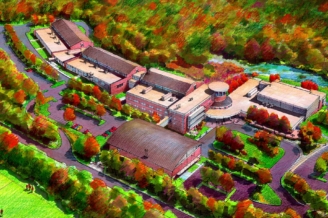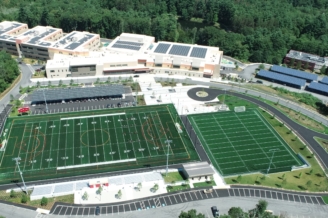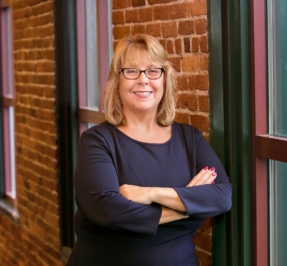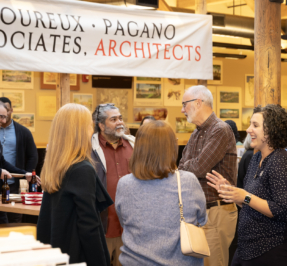Innovations in Education Design
Innovation is frequently born out of collaboration. Design inspiration is sparked by the conversations and ideas shared throughout the creative process. And experience serves to refine those ideas so that the implementation gets better and better over time.
In the 1990’s the Wachusett Regional School District hired LPA|A to design an elementary school to replace their nearly 100-year old school. Through the collaborative programming process that the firm undertakes with every project, teachers shared their desire to have spaces like the old coat alcove spaces in their existing school corridors. These spaces made an ideal spot for gathering small groups or pulling students out of class for one-on-one help. These conversations led to the development of common room areas in what is now the Mayo School in Holden.
Subsequent schools for the district also came to include similar common areas, and other districts who hired LPA|A for school projects also saw the potential benefits of these types of spaces and requested the same. Now, in 2020 common rooms are a regular feature in new public schools.
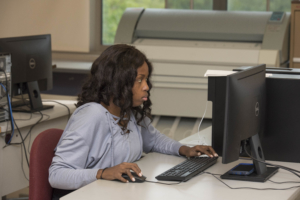
Drafting Student at Worcester Technical High School
LPA|A is well-known for the design of educational spaces and has, through collaboration with multiple school districts over several decades, had the opportunity to innovate on a number of fronts. At the same time, designing across building types, not limiting the firm’s portfolio to schools or any other niche within the industry allows for a broader view and more opportunities for creativity.
The innovation that transformed Worcester Technical High School and made the school a national model in 2006 was a design that supported an academy structure, where academic and vocational spaces are grouped in pods helping facilitate the interconnectedness of the classroom learning and hands-on experience.
At the time Worcester Technical High School was being designed, there was a wider shift in the approach to technical education. High academic standards integrated with the technical curriculum prepares students for college and careers and has put these programs in high demand across the state.
The experience of designing technical vocational spaces for Worcester Tech is directly applied to LPA|A designs for comprehensive high schools, South High and Doherty for the City of Worcester. The space being designed for the Engineering Technology Academy at Doherty, for example, will support the expansion and will seek to enhance the learning within this popular district-wide program.
Change often will beget more change, as new ways of thinking about teaching practices, accessibility, or uses of technology will then inspire news ways of thinking about the function and potential features of buildings. Ideally the building design can then further enhance and elevate the experience and activities that take place there.
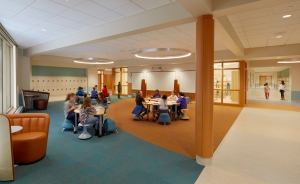
Students in the Common Area at Nelson Place
Another school in the district, Nelson Place Elementary School, also supports a district-wide program and is a model for sustainable design. The City of Worcester targeted net zero energy and also needed a design to support their district-wide autism program. While not directly at odds, these different, yet equally important priorities needed to be balanced with budgetary constraints inherent in any publicly funded project.
The universal design and attention to special education needs were not in any way undercut by the desire for energy efficient, low maintenance building design. Having the expertise of an entire team, both LPA|A staff and expert consultants ensured attention to critical details and the emergence of creative solutions. Architect Christina Bazelmans is both LEED certified and worked closely with school administration and the consultant team on ways to make the school as accommodating as possible to students across a range of abilities and disabilities.
“Given the diverse needs of the school’s population, it was especially important to look at the entire project through the lens of inclusion, including color scheme, wayfinding, lighting, furniture, acoustics, technology, and room configurations and adjacencies,” said Christina.
As we look to the future of design in public education specifically, but across building types, we see a new set of priorities in the wake of Covid-19. Schools that LPA|A has designed in the last decade are in the fortunate position of having HVAC systems already addressing indoor air quality and technology capabilities that help facilitate remote learning, for example. It is always the goal to design spaces that are not only meeting current needs but are forward-looking and adaptable to meet emerging challenges.
Over the course of five decades it is inevitable that priorities would shift, technologies advance and new ideas and ways of doing things arise. While this has certainly been true for the firm, looking back as we celebrate our 50th year in business, the collaborative process that leads to innovation and creativity remains intact, even if it sometimes looks very different.
Categorized In: Articles, News
Tagged In: K-12 Schools, Shrewsbury, Sustainable Design, Worcester
Share This



